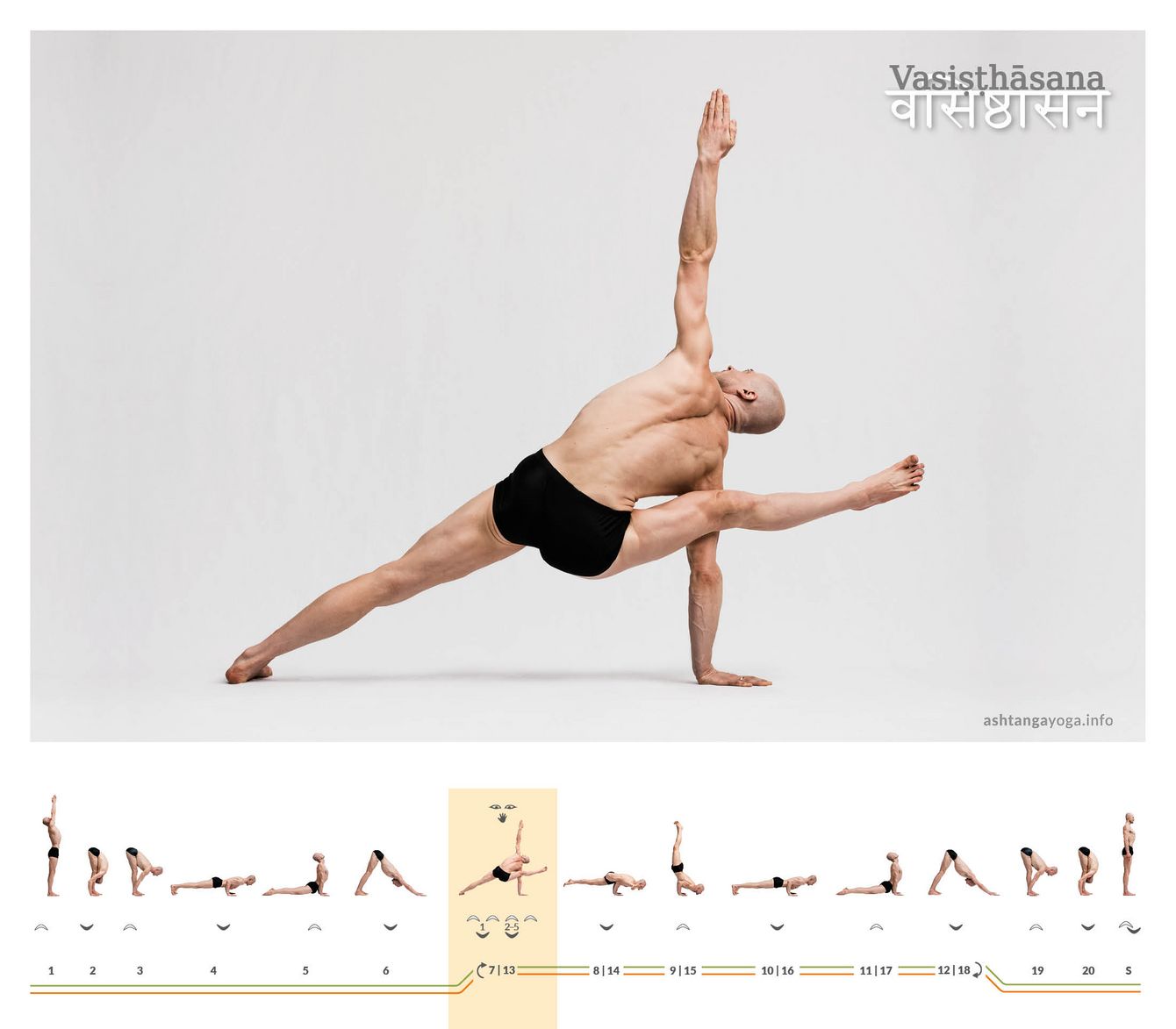

Legend: According to a tale from the Rāmāyaṇa, Viśvāmitra was once a mighty king who became jealous of the sage Vasiṣṭha. He desired to be the wisest and most powerful sage, so he challenged Vasiṣṭha to a philosophical competition.
After a fierce battle, Viśvāmitra was defeated by Vasiṣṭha. He realized that he had been blinded by his own ego and powers. This defeat humbled him so profoundly that he renounced his kingdom and retreated to the forest. There, he meditated and practiced intense asceticism (tapas). This practice not only increased his powers but also enabled him to control humans and nature like a god through Mantrāṇi.
Eventually, Viśvāmitra became a Brahma R̥ṣi and the teacher of Rama and Lakṣmaṇa. However, at that time, Vasiṣṭha served as the priest of Daśaratha, the father of Rama. The rivalry between the two continued. Eventually, Viśvāmitra overcame his own pride, and the two sages became good friends.
Special Note: In older Aṣṭāṅga Yoga books, the names of the poses Vasiṣṭhāsana (the previous pose) and Viśvāmitrāsana are often reversed. However, in "Light on Yoga" by BKS Iyengar, most Aṣṭāṅga Yoga books, and in most other yoga lineages, the names are as presented here.
In Traditional Count: Begin directly from the pose of "Downward-Facing Dog" in the previous sequence of movements.
Vinyāsa 7 - Inhalation, Exhalation, Inhalation, 5 breaths, Inhalation:
Inhale and slide your shoulders over your hands. Move your right hand to the center of your yoga mat and swing your right leg straight over your right arm. Shift your weight onto your right hand and rotate sideways as you exhale, with your left arm initially lying flat against the left side of your body. Inhale again, lifting your left arm upward. Stay here until the fifth exhalation. Inhale once more.
Vinyāsa 8 - Exhalation:
Lower your left arm back to your body's side. Then, turn your abdomen downward and place both arms on the ground while balancing your body horizontally on your bent elbows.
Vinyāsa 9 – Inhalation:
Release your right leg from your arm and extend both legs as vertically as possible into the air, keeping your arms bent. Your chin hovers close to the ground.
Vinyāsa 10 to 12:
Follow the familiar sequence of movements until you return to "Downward-Facing Dog."
Vinyāsa 13 to 18:
Repeat the sequence of movements on the other side until you return to the pose of "Downward-Facing Dog" again.
In traditional counting: Proceed directly to the sequence of movements for the next pose from here.
Effect: This pose enhances flexibility in the legs while simultaneously building stability in the core. It opens your heart center while strengthening the shoulder girdle.
Fotograf: Richard Pilnick - www.richardpilnick.com


 Dr. Ronald Steiner
Dr. Ronald Steiner
Messages and ratings